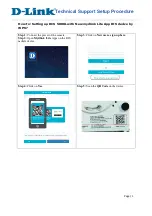
• Link maintenance packets used to manage and debug a link
Low-Density Parity-Check
is a linear error correcting code, a method of transmitting a message
over a noisy transmission channel. An LDPC is constructed using a
sparse bipartite graph. LDPC codes are capacity-approaching codes,
which means that practical constructions exist that allow the noise
threshold to be set very close (or even arbitrarily close on the BEC) to
the theoretical maximum (the Shannon limit) for a symmetric
memoryless channel. The noise threshold defines an upper bound for
the channel noise, up to which the probability of lost information can
be made as small as desired. Using iterative belief propagation
techniques, LDPC codes can be decoded in time linear to their block
length.
Microsoft Point-to-Point
Encryption
encrypts data in
based dial-up connections or
Point-to-Point Tunneling Protocol (PPTP) connections. 128-bit key
(strong), 56-bit key, and 40-bit key (standard) MPPE encryption schemes
are supported. MPPE provides data security for the PPTP connection
that is between the VPN client and the VPN server.
Maximum Receive Unit
is the maximum size (in bytes) of the frame, which can be received at
the data link layer of communication protocol.
Maximum Segment Size
is a parameter of the options field of the
header that specifies the
largest amount of data, specified in bytes, that a computer or
communications device can receive in a single TCP segment. It does
not count the TCP header or the IP header.
Maximum Transmission
Unit
is the largest size packet or frame, specified in octets (eight-bit bytes),
that can be sent in a packet- or frame-based network such as the
Internet. The Internet's Transmission Control Protocol (TCP) uses the
MTU to determine the maximum size of each packet in any
transmission. Most computer operating systems provide a default MTU
value that is suitable for most users. In general, Internet users should
follow the advice of their Internet service provider (ISP) about whether
to change the default value and what to change it to.
Network Access Control List
rules that are applied to IP interfaces that are available on a router,
each with a list of hosts or networks that are permitted or denied to
use the service. Access control lists can be configured to control both
inbound and outbound traffic.
Network Time Protocol
is a protocol that is used to synchronize computer clock times in a
network of computers. Developed by David Mills at the University of
Delaware, NTP is now an Internet standard. In common with similar
protocols, NTP uses Coordinated Universal Time (UTC) to synchronize
computer clock times to a millisecond, and sometimes to a fraction of
a millisecond.
Network Traffic
Classification Engine
also DPI, Deep Deep Packet Inspection
is a form of computer network packet filtering that examines the data
part (and possibly also the header) of a packet as it passes an inspection
point, searching for protocol non-compliance, viruses, spam, intrusions,
Keenetic Extra (KN-1710) — Command Reference Guide
327
Glossary
Содержание EXTRA KN-1710
Страница 2: ......
Страница 6: ...Command Reference Guide Keenetic Extra KN 1710 6 Contents Overview...
Страница 20: ...Command Reference Guide Keenetic Extra KN 1710 20 Chapter 1 Product Overview...
Страница 26: ...Command Reference Guide Keenetic Extra KN 1710 26 Chapter 2 Introduction to the CLI...
Страница 322: ...Command Reference Guide Keenetic Extra KN 1710 322 Chapter 3 Command Reference...
Страница 332: ...Command Reference Guide Keenetic Extra KN 1710 332 Glossary...
Страница 348: ...Command Reference Guide Keenetic Extra KN 1710 348 Appendix C SNMP MIB...
















































